Curious about Event Driven Architecture?
In the ever-evolving landscape of software development, staying ahead requires adopting innovative approaches that can handle the growing complexity of modern systems.
One such approach that has gained significant traction is Event Driven Architecture (EDA).
Whether you’re a seasoned developer seeking new horizons or a newcomer eager to explore the depths of software architecture, this comprehensive guide will take you on a journey through the intricacies of EDA.
From its fundamental concepts to its real-world applications, advantages, challenges, and more, you’ll uncover the power of events that shape the future of software systems.
Therefore, let’s get right into it:
What Is Event Driven Architecture?
If you are in world of software development, you keep hearing about this concept, but what is it?
At its essence, Event Driven Architecture (EDA) is not merely a technical concept; it’s a philosophy that reshapes how software systems communicate and interact.
EDA revolves around the idea that a system’s components communicate asynchronously by producing, detecting, and consuming events.
An event, in this context, signifies a noteworthy occurrence or a change of state that holds significance in determining the system’s behavior.
Unlike traditional synchronous communication, where components are tightly coupled, EDA promotes loosely coupled interactions that enhance scalability, responsiveness, and adaptability.
Now, there are different types of event driven architecture and we will discuss them in next section of the blog.
Types of Event Driven Architecture
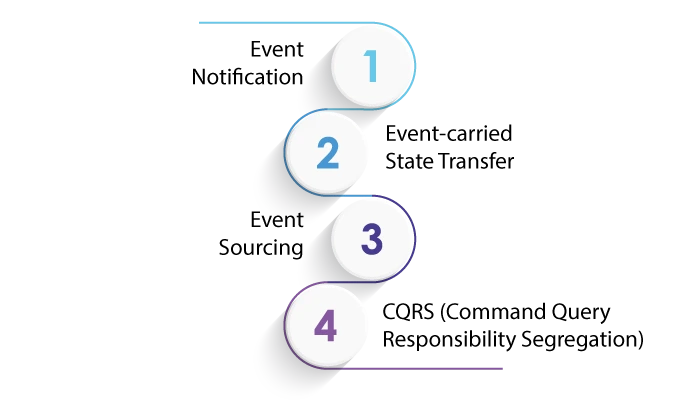
To delve deeper, let’s categorize Event Driven Architecture into several distinct types, each emphasizing different ways events are managed and processed:
1. Event Notification
In this type of EDA, an event is broadcasted to all components interested in it.
Think of it as a megaphone announcement where multiple recipients are informed about an occurrence.
This follows a one-to-many communication model.
2. Event-carried State Transfer
Here, the events themselves carry the data required to update the state of interested components.
This adheres to the publish-subscribe model, where components subscribe to specific event types and receive updates as events occur.
3. Event Sourcing:
Event driven architecture can also adopt an event sourcing approach.
In this scenario, events become the primary source of truth for a system’s state.
The current state can be reconstructed by replaying the events that led to it, ensuring a comprehensive audit trail of past actions.
4. CQRS (Command Query Responsibility Segregation):
This variant of EDA takes a unique approach by segregating the responsibilities of handling commands (write operations) and queries (read operations) into separate components.
This separation enhances optimization and scalability as each aspect can be fine-tuned independently.
Advantages Of Event Driven Architecture
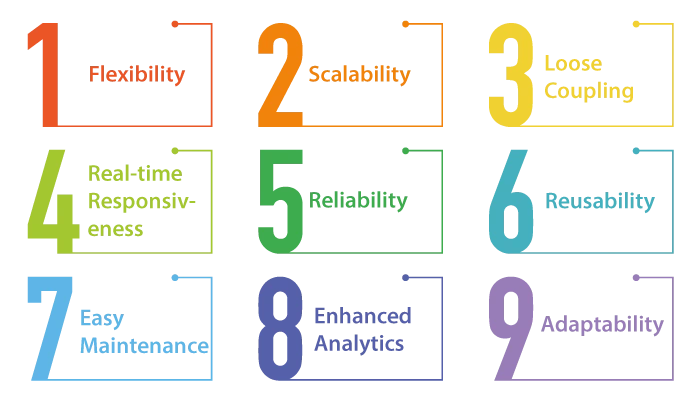
One of the biggest question about event driven architecture is, why should you use it?
As you consider incorporating Event Driven Architecture into your system design, it’s essential to understand the advantages it brings to the table.
These are, as mentioned below:
- Flexibility: EDA empowers components to evolve independently, allowing new features to be introduced without disrupting the entire system.
- Scalability: System components can be scaled individually, improving overall performance and responsiveness without affecting other parts of the system.
- Loose Coupling: By enabling communication through events, event driven architecture minimizes direct dependencies between components, making the system more resilient to changes.
- Real–time Responsiveness: As events are processed asynchronously, the system can react to changing conditions in real time, ensuring timely responses.
- Reliability: In the face of component failures, the system can continue processing other events, mitigating the impact of failures on the entire system.
- Reusability: Events can be consumed by multiple consumers, promoting code and logic reusability across the system.
- Easy Maintenance: Isolated components are easier to maintain and debug, making troubleshooting and updates more manageable.
- Enhanced Analytics: EDA provides valuable insights by capturing and analyzing a sequence of events, allowing for better understanding of system behavior and user interactions.
- Adaptability: EDA is particularly well-suited for systems that need to adapt quickly to changing conditions, dynamic user interactions, and evolving requirements.
Examples Of Event Driven Architecture
It goes without saying that one of the best ways to understand a concept like event driven architecture is via examples.
Let’s look at a few popular examples of event driven architecture, below:
1. Uber
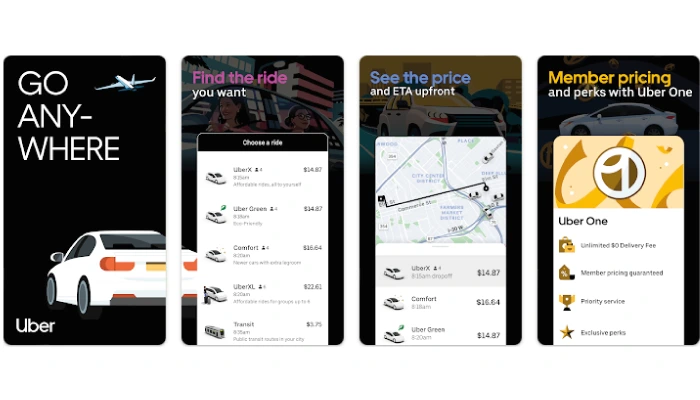
Being one of the best taxi apps, Uber is widely used.
Now, imagine opening the Uber app to request a ride.
Behind the scenes, EDA is at play. An event is generated, when a request is submitted.
This event triggers a series of actions: finding available drivers, calculating fares, and ultimately matching you with the nearest driver—all in real time.
2. Netflix
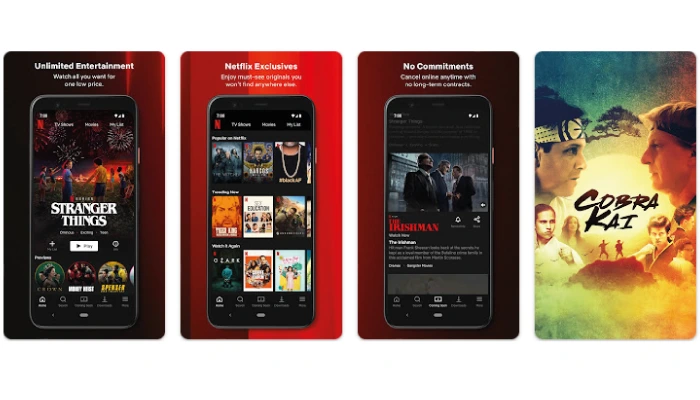
Much like uber, a lot of people use apps like Netflix.
Therefore, you can probably relate when we ask:
Have you ever wondered how Netflix suggests content tailored to your preferences?
Event driven architecture is the backbone of this recommendation engine. Events, such as your viewing history, likes, and dislikes, feed into the system.
These events are processed to generate personalized content suggestions, ensuring your viewing experience is optimized.
3. Apache Kafka
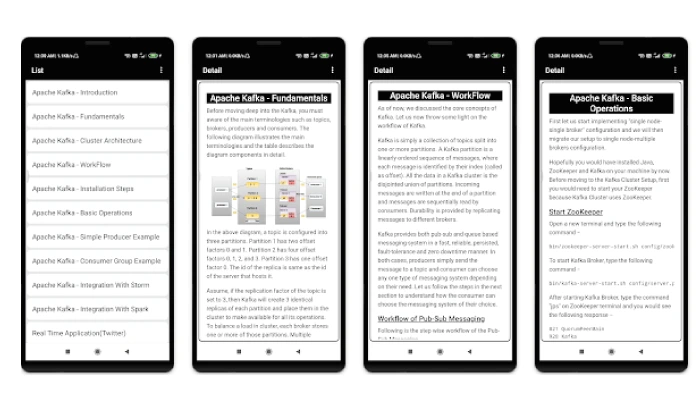
Apache Kafka, a popular event streaming platform, exemplifies EDA’s power.
It facilitates building real-time data pipelines and streaming applications by enabling seamless event-based communication between various components.
4. Smart Home Systems
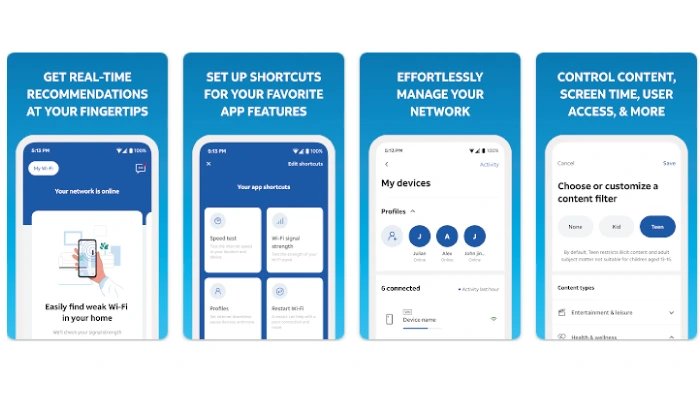
Smart home systems illustrate EDA on a smaller scale. Devices like thermostats, lights, and security cameras communicate through events.
For instance, a motion sensor event can trigger a series of actions like turning on lights and sending a notification to your smartphone.
5. E-commerce Order Processing
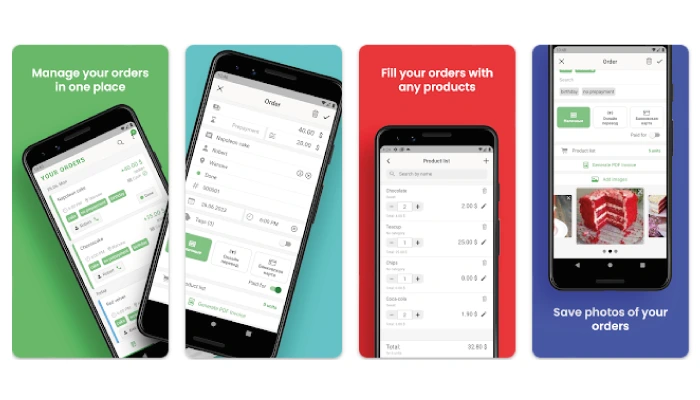
In the realm of e-commerce, EDA streamlines order processing.
When you place an order, an event initiates various stages of processing: updating inventory, generating shipping labels, and sending you a confirmation email with tracking information.
This is one of the reasons why event driven architecture is so popular in e-Commerce development.
Moving on, it’s time to understand when you should use event driven architecture.
When To Use Event Driven Architecture

Before integrating any architectural pattern, it’s crucial to understand when it’s most effective.
Moving on, event Driven Architecture finds its prime application in various scenarios, where its advantages can shine through:
1. Real-time Analytics
When dealing with high-speed data streams that require instant analysis, EDA’s asynchronous nature allows for the processing of data as it arrives.
Furthermore, this is particularly valuable in monitoring user behavior on a website, tracking social media trends, or analyzing financial market data in real time.
2. Microservices Integration
If your system is built on microservices architecture, event driven architecture can be the glue that holds it all together.
Rather than tightly coupling services with synchronous communication, EDA enables services to communicate through events, ensuring autonomy and scalability.
3. IoT Applications
The Internet of Things (IoT) is all about connecting devices to share data and trigger actions.
EDA is tailor-made for IoT scenarios, where events could signify sensor readings, device interactions, or environmental changes that need immediate responses.
4. Financial Systems
In the high-stakes realm of financial systems, every millisecond counts.
EDA can be employed to react to market fluctuations, triggering buy or sell orders, and ensuring timely execution.
Therefore, making event driven architecture popular choice for fintech app development.
5. Supply Chain Management
Managing a complex supply chain involves juggling multiple moving parts.
EDA can assist in tracking shipments, updating inventory, and responding to demand changes, ensuring a well-coordinated operation.
6. Social Media Platforms
Social media apps like Instagram thrive on real-time interactions.
Event driven architecture can facilitate the instantaneous notification of users about likes, comments, shares, and messages, enhancing user engagement.
7. Gaming Industry
Multiplayer online games demand seamless synchronization across players.
EDA ensures that player actions trigger appropriate events that update the game state for all participants in real time.
8. Healthcare Systems
In healthcare, EDA aids in patient monitoring, appointment scheduling, and alerting medical staff about critical events like abnormal vital signs or equipment malfunctions.
Event Driven Architecture Diagram
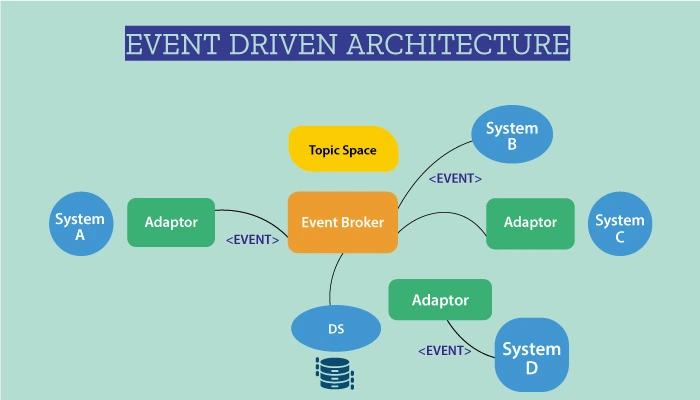
A visual representation of Event Driven Architecture can help solidify your understanding. Moreover, this diagram depicts the flow of events between different components in a typical EDA setup. Events are generated, propagated, and consumed, highlighting the decoupled nature of the architecture.
Event Driven Architecture Vs Microservices
To fully grasp the essence of Event Driven Architecture, it’s helpful to compare it with another popular architectural approach: Microservices.
Let’s compare both of these in the table below:
| Event Driven Architecture | Microservices | |
| Communication | EDA emphasizes asynchronous event-based communication. | Microservices involve communication through APIs and synchronous calls. |
| Decoupling | EDA promotes loose coupling between components through event-based interactions. | Microservices emphasize modularization, with each service encapsulating its functionality. |
| Scalability | EDA scales based on event volume and processing speed. | Microservices scale by replicating services horizontally. |
| Use Case | EDA excels in scenarios demanding real-time interactions, data flow, and responsiveness. | Microservices are ideal for breaking down complex applications into manageable, independent units. |
| Complexity | EDA can introduce complexity due to managing event flows and correlation. | Microservices can lead to challenges in inter-service communication and maintaining consistency. |
Challenges Of Event Driven Architecture
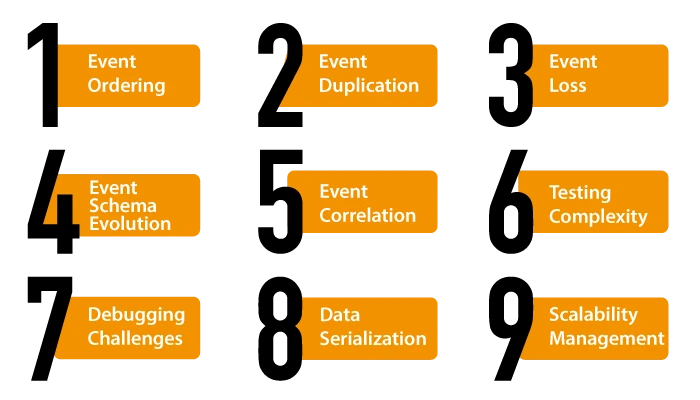
While Event Driven Architecture offers significant benefits, it’s essential to be aware of the potential challenges.
Therefore, these are, as mentioned below:
- Event Ordering: Ensuring the correct sequence of events across distributed systems can be intricate.
- Event Duplication: Network issues or failures can lead to duplicated events, potentially causing data inconsistencies.
- Event Loss: Network failures can result in the loss of events, impacting the accuracy of the system’s state.
- Event Schema Evolution: Changing event structures can create compatibility issues between producers and consumers.
- Event Correlation: Connecting related events and understanding their context can be complex, necessitating sophisticated correlation mechanisms.
- Testing Complexity: Verifying event-driven systems is challenging due to the asynchronous nature of events and the varied event flows.
- Debugging Challenges: Troubleshooting issues across intricate event chains can be time-consuming and demanding.
- Data Serialization: Choosing the appropriate serialization format for events is crucial to ensure compatibility across various components.
- Scalability Management:Handling high volumes of events requires careful scaling of event processing components to maintain performance.
Conclusion
As the digital landscape continues to evolve, the need for flexible, adaptable, and responsive software systems becomes more pronounced. Event Driven Architecture stands as a testament to the power of events in shaping these systems. Moreover, by understanding the core concepts, exploring use cases, recognizing advantages, and acknowledging challenges, you’re poised to make informed architectural decisions that can pave the way for innovative, future-proof solutions.
FAQ
EDA shines in scenarios like real-time analytics, microservices integration, IoT applications, and managing dynamic workflows.
EDA focuses on asynchronous event communication, while Microservices emphasize modular, independent services.
EDA offers flexibility, scalability, loose coupling, real-time responsiveness, and enhanced analytics, among other benefits.
Certainly, Uber uses EDA for real-time ride matching based on event streams from drivers and riders.
EDA excels in IoT scenarios by processing events from various devices and triggering appropriate actions.
Netflix employs EDA for personalized content recommendations, while Uber uses it for real-time ride matching.
Yes, managing event flows and ensuring proper event correlation can add complexity to a system.
Challenges include event ordering, duplication, loss, schema evolution, and managing complex event flows.

Niketan Sharma is the CTO of Nimble AppGenie, a prominent website and mobile app development company in the USA that is delivering excellence with a commitment to boosting business growth & maximizing customer satisfaction. He is a highly motivated individual who helps SMEs and startups grow in this dynamic market with the latest technology and innovation.
Table of Contents




No Comments
Comments are closed.